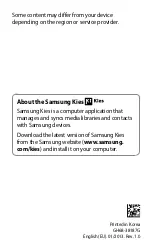
76
If the primary does not answer, the call goes to the primary phone’s Call Forward
destination when the Call Forward - Ring No Answer ring timeout value is
reached.
If the primary does answer or put on hold, the secondary phone’s SA light does
indicate call status.
If neither the primary telephone or the secondary phones have Do Not Disturb enabled,
a call rings on both phones.
If the primary telephone user presses the DND button while the call is ringing, it
stops ringing and the BSA light stops blinking but continues to ring on the secondary.
If the secondary does not answer, the call goes to the primary phone’s Call Forward
destination when the Call Forward - Ring No Answer ring timeout value is reached.
If the secondary telephone user presses the DND button while the call is ringing, it
stops ringing and the SA light stops blinking but continues to ring on the primary. If
the primary telephone does not answer, the call goes to the primary phone’s Call
Forward destination when the Call Forward - Ring No Answer ring timeout value is
reached.
If the primary and secondary telephone users both press the DND buttons while the
call is ringing, it stops ringing and the SA light stops blinking on both phones. The
call goes to the primary phone’s Call Forward - Busy destination.
If the primary telephone enables Do Not Disturb, a call rings on a secondary phone. If
the primary telephone user disables Do Not Disturb while the call is ringing, the call
does not start ringing on the primary. Do Not Disturb is enabled only for subsequent
calls. This is also true for a secondary telephone user who toggles the Do Not Disturb
setting while a call is ringing.
If the primary telephone enables Do Not Disturb and a call comes in from a hunt group,
the Do Not Disturb setting is ignored and the call rings on the primary. If a secondary
telephone enables Do Not Disturb and a call comes in from a hunt group to the primary
phone, the call does not ring on the secondary phone.
Hands Free and Bridged Line Calls
Enabling the Hands Free feature has the following effect on bridged calls:
If the primary telephone has Hands Free enabled, a call rings briefly on the
secondary telephone before it is automatically answered by the primary phone.
If the secondary telephone has Hands Free enabled, only calls made to the
secondary's telephone extension are answered Hands Free. Calls to primary
telephone are not answered Hands Free on the secondary phone; they appear as
normal bridge calls.
Call Forward, Forward to Voice Mail, and Bridged Line Calls
Enabling Call Forwarding and Forward to Voice Mail (or enabling both features) has the
following effect on bridged calls:
If the primary telephone enables Forward to Voice Mail, calls ring once on the
primary and secondary phones, and then go to voicemail.
If the primary telephone enables Call Forward Universal, calls to the primary go to
the Call Forward Universal destination immediately and do not ring on the primary or
secondary phones.














































